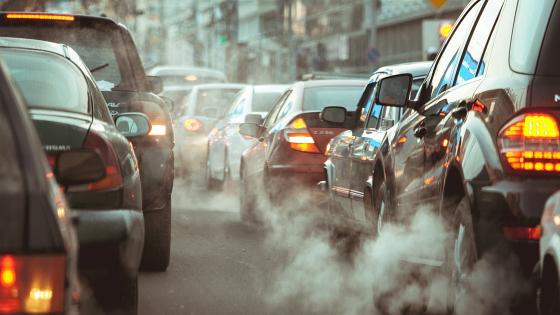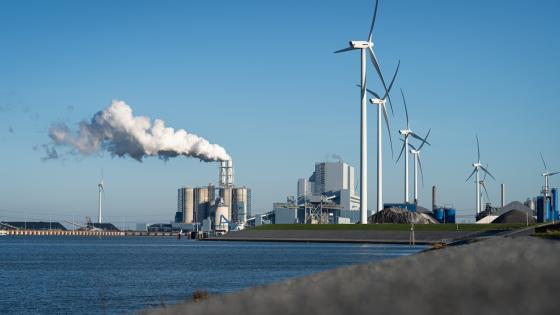In April, President Obama’s plan to battle climate change by forcing power plants to reduce their carbon emissions survived its first major court challenge from the coal industry. But the US Environmental Protection Agency (EPA) will almost certainly be back in court once the plan is actually put in to action over the next few months. The fossil fuel industry is justifiably concerned about the EPA receiving a federal mandate to reduce carbon pollution. Once it receives a mandate, the EPA has proven itself to be quite effective at reducing air pollution. For the six ‘criteria’ pollutants that the EPA is mandated to regulate, emissions of all six have declined substantially. For example, carbon monoxide pollution (the toxic stuff that comes out of car exhausts) has declined by 73% since 1990. Airborne lead has declined by 83% over the same period. Particulates (think of ash and smoke) have declined by 38% since 1990. Furthermore, large reductions in particulate pollution in the 1970s have been shown to be a direct effect of EPA regulation (Chay et al 2003; Chay and Greenstone 2003).
Optimal pollution
Now that air pollution in many parts of the US has declined significantly, an important policy question becomes how much further reduction is desirable? Economists love to talk about the ‘optimal level of pollution’. We know that the cost of removing the last speck of pollution from the sky would be prohibitively expensive and the reason we have pollution in the first place is because it’s a by-product of making things that we really need and value. So there must be some level of pollution where the benefits justify the costs. The problem is finding this optimal amount of toxic carbon monoxide.
Why is it so hard to work out when the benefits of pollution justify the costs? The benefits are fairly straightforward to measure – kilowatts of energy, laptops produced, miles travelled, etc. But measuring the costs is much more challenging. We know that air pollution damages human health but just how big is this damage? We obviously can’t run experiments to see what the damage is. With a few notable exceptions such as smokers and men wearing too much cologne, most people don’t voluntarily expose themselves to toxic air pollution. We could look at health outcomes in areas with lots of pollution but people might be getting sick for reasons that are not directly caused by pollution – lower incomes or higher unemployment might be higher in these areas.
Natural air pollution experiments
One way to get around this issue is to find ‘natural’ pollution experiments – situations where the general public has been randomly exposed to pollution in a way that mimics an actual experiment. A great example of this approach is a paper by Chen et al (2013). In China, from 1950 to 1980, homes and offices were provided with free winter heating through the provision of free coal for fuel boilers. However, due to budgetary limitations, this subsidy was only extended to homes located north of the Huai River (which approximately bisects China). By comparing similar areas located on opposite sides of the river, Chen et al find ambient concentrations of particulates (smoke and ash) are about 55% higher in the north and life expectancies are about 5.5 years lower due to increased cardiorespiratory mortality. Conclusion – long-term exposure to particulates kills. A similar study examined the decision to ban the sale of coal in Dublin, Ireland in 1990. By comparing 6 years before and 6 years after the coal ban, Clancy et al (2002) found that black smoke concentrations in Dublin decreased by 70%, non-trauma deaths declined by 6%, respiratory deaths by 16%, and cardiovascular deaths by 10%. Same conclusion.
Many of these natural experiment studies have focused on extremely large reductions in particulates and on long-term outcomes such as deaths. It has proven much more difficult to estimate the effect of relatively small reductions in particulates on short-term outcomes such as illness and hospitalisation. But this is exactly the type of information that is needed for setting pollution standards in relatively low-pollution environments. One of the major confounding issues in identifying the short-term effect of particulates on health, especially in the EU and the US, is that most major pollutants are highly correlated. The kinds of factories and vehicles that produce one pollutant also produce a lot of another. For example, in the city of Phoenix, Arizona, the correlation coefficient between carbon monoxide and particulates pollution is 0.85 (Mar et al 2000). In very crude terms, this means that 85% of the time when carbon monoxide goes up or down, particulates are doing the exact same thing. In a study of the state of California, Neidell (2004) finds that the correlation between nitrogen dioxide and particulates is 0.7 (again, 70% of the time, the two pollutants move in the same direction).
Since particulates are so highly correlated with other (often more dangerous) pollutants, it can become a challenge when we want to start assigning blame to particulates. In fact, many academic studies that look at the effect of particulates alongside other pollutants find that particulates have no effect on health outcomes. For example, in the Neidell (2004) study mentioned above, he finds no effect of particulate pollution on hospitalisations for asthma among children but carbon monoxide has a large effect on emergency room admissions. Is this because particulates are not particularly bad or is this just an example of multicollinearity? The statistical challenge now lies in finding random sources of particulate pollution that are not correlated with other pollutants. Strangely enough, a potential solution might lie 4,091 feet above sea level on top of a mountain.
Figure 1. Satellite image of sulfur dioxide and particulate pollution from Kīlauea volcano

Source: NASA.
Volcanic smog in Hawaii
The largest stationary source of sulfur dioxide pollution in the US is not a coal-fired power plant in Texas or a steel factory in Pittsburgh. It’s a mountain in Hawaiʻi. Located on the Big Island of Hawaiʻi, Kīlauea volcano occasionally and intermittently emits levels of sulfur dioxide that far exceed EPA guidelines (Figure 1). This sulfur dioxide reacts with sunlight, oxygen, dust and water in the air to produce ‘vog’ (volcanic smog) – lots and lots of small particulates suspended in the air. In other words, particulate pollution. The Hawaiian Islands typically have some of the best air quality in the world. There is no major manufacturing, very little industrial agriculture, only one very small coal plant and strong trade winds that blow most pollution into the vast Pacific Ocean. But whenever Kīlauea volcano starts emitting gases and winds die down, the state’s 1.4 million residents experience short-term exposure to elevated levels of particulate pollution.
Critically, exposure to vog pollution is not correlated with exposure to other air pollutants. In Hawaiʻi, the correlation coefficient between carbon monoxide and particulates is 0.0118 (remember that it was 0.85 in the study in Phoenix, Arizona). In a recent paper, we use this exogenous source of pollution variation to estimate the impact of particulate matter on emergency room admissions and costs in the state of Hawaii (Halliday et al 2015). To accomplish this, we employ two sources of data. The first is measurements of air quality taken from various monitoring stations across the state. The second is data on emergency room utilisation due to cardio-pulmonary reasons. An important feature of our study is that our cost data are more accurate than the cost measures used in much of the literature. We then merged these data by region and day to obtain a comprehensive database of air quality and medical care utilisation in the state of Hawaii. Using the merged database, we then employed regression techniques in which we related emergency room utilisation and charges to measures of exposure to particulates while controlling for comprehensive seasonal patterns and regional effects.
So, are particulates particularly bad? We find strong evidence that short-term (i.e. daily) exposure to particulate pollution increases pulmonary-related hospitalisations and expenditures. Specifically, a one standard deviation increase in daily particulate pollution leads to a 2-3% increase in expenditures on emergency room visits for pulmonary-related outcomes. However, we do not find strong effects for cardiovascular outcomes. We also find no effect of volcanic pollution on fractures, our placebo outcome. Finally, the effects of particulate pollution on pulmonary-related admissions are most concentrated among the very young (Figure 2). The largest impacts of particulates are on children under the age of 1 and the next largest impact is on children aged 2-5. Not only do we find that even short-term exposure to particulate pollution can be bad, it appears that it is the very young who are the most vulnerable.
Figure 2. Effects of particulates on pulmonary-related ER admissions by age of patient

Notes: Heights indicate estimated effects divided by number of people in each age bin. All effects are statistically significant at the 5% level or better.
References
Chay, K, C Dobkin and M Greenstone (2003) “The Clean Air Act of 1970 and adult mortality”, Journal of Risk and Uncertainty, 27(3): 279-300.
Chay, K and M Greenstone (2003) “Air quality, infant mortality, and the Clean Air Act of 1970”, NBER working paper, no. w10053.
Chen, Y, A Ebenstein, M Greenstone and H Li (2013) “Evidence on the impact of sustained exposure to air pollution on life expectancy from China’s Huai River policy”, Proceedings of the National Academy of Sciences, 110(32): 12936-12941.
Clancy, L, P Goodman, H Sinclair and D W Dockery (2002) “Effect of air-pollution control on death rates in Dublin, Ireland: an intervention study”, The Lancet, 360(9341): 1210-1214.
Halliday, T J, J Lynham and Á de Paula (2015) “Vog: Using volcanic eruptions to estimate the health costs of particulates and SO2”, CEPR Discussion Paper 10543.
Mar, T F, G A Norris, J Q Koenig and T V Larson (2000) “Associations between air pollution and mortality in Phoenix, 1995-1997”, Environmental health perspectives, 108(4): 347.
Neidell, M J (2004) “Air pollution, health, and socio-economic status: the effect of outdoor air quality on childhood asthma”, Journal of Health Economics, 23(6): 1209-1236.







